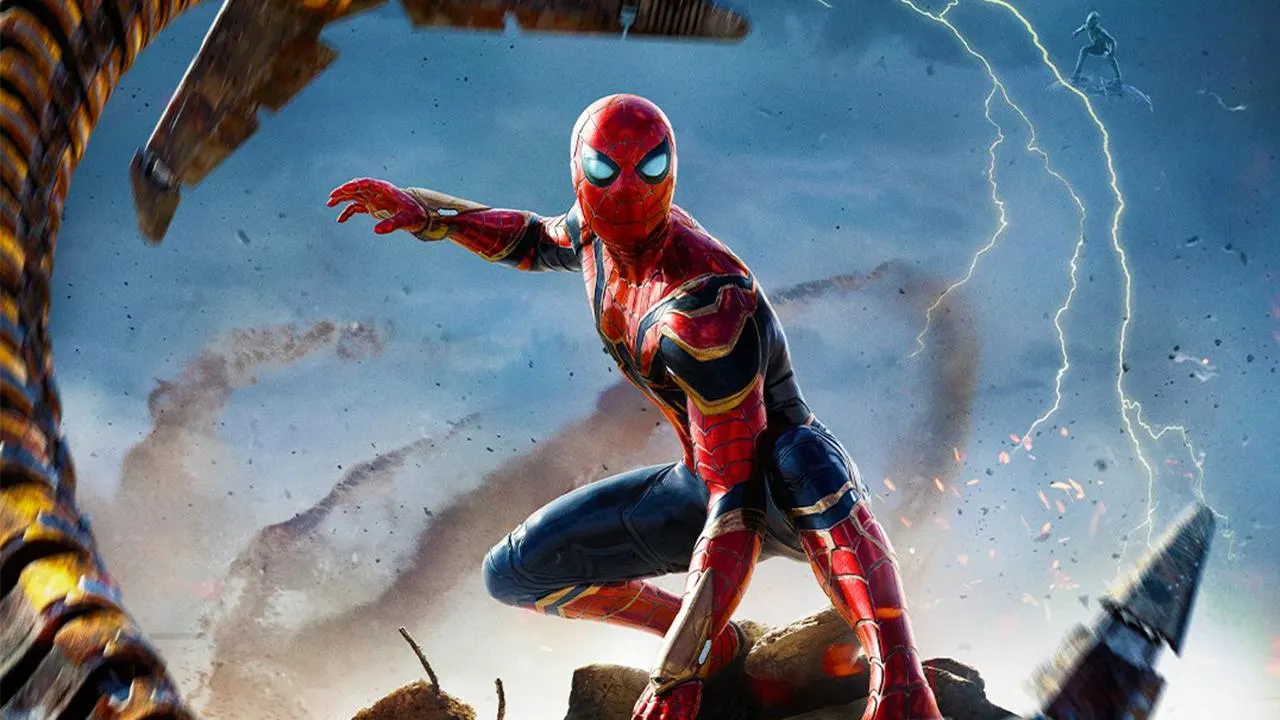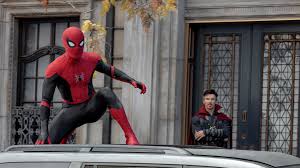Spider-Man: No Way Home (2021)

A Multiverse Spectacle: A Review of Spider-Man: No Way Home (2021)
Spider-Man: No Way Home (2021) is a cinematic event that redefines the superhero genre. Directed by Jon Watts and starring Tom Holland, the film serves as the third installment in the Marvel Cinematic Universe’s (MCU) Spider-Man trilogy, delivering a thrilling, emotional, and nostalgic journey that has left audiences buzzing since its release. By embracing the concept of the multiverse, No Way Home unites three generations of Spider-Man fans in a story that blends high-stakes action with deeply personal moments.
Plot Overview
The story picks up where Spider-Man: Far From Home (2019) left off, with Peter Parker’s (Tom Holland) identity revealed to the world by Mysterio. Struggling to cope with the fallout, Peter turns to Doctor Strange (Benedict Cumberbatch) for help. A spell to erase everyone’s memory of Peter’s identity goes awry, tearing open the multiverse and bringing villains from other dimensions into the MCU.
As Peter confronts foes like Doctor Octopus (Alfred Molina), Green Goblin (Willem Dafoe), and Electro (Jamie Foxx), he realizes that their fates are tied to their respective universes. Joined by alternate versions of Spider-Man played by Tobey Maguire and Andrew Garfield, Peter embarks on a mission to save the villains from their destined doom while grappling with his own responsibilities as a hero.
A Celebration of Legacy
One of No Way Home’s greatest strengths is its ability to honor the legacy of previous Spider-Man films while advancing the MCU’s narrative. The return of Tobey Maguire and Andrew Garfield as their respective Spider-Men is a masterstroke of fan service that feels earned and meaningful. Their interactions with Tom Holland’s Peter are heartfelt and authentic, offering moments of humor, camaraderie, and profound emotional depth.
The film’s villains are equally compelling. Willem Dafoe’s Green Goblin is particularly menacing, delivering a performance that rivals his iconic turn in Sam Raimi’s Spider-Man (2002). Alfred Molina’s Doctor Octopus and Jamie Foxx’s Electro are given fresh layers of complexity, making them more than just antagonists. The film’s ability to balance its large ensemble cast is a testament to Jon Watts’ direction and the strength of the screenplay.
Tom Holland’s Defining Performance
Tom Holland delivers his most mature and emotionally resonant performance as Peter Parker. The film pushes Peter to his limits, forcing him to confront loss, responsibility, and the consequences of his choices. Holland’s portrayal captures the essence of Spider-Man—a hero defined by resilience and selflessness. His journey in No Way Home cements his place as one of the definitive portrayals of the character.
Action and Visual Effects
The action sequences in No Way Home are some of the most exhilarating in the MCU. From the bridge showdown with Doctor Octopus to the climactic battle at the Statue of Liberty, the film delivers jaw-dropping set pieces that make full use of the multiverse concept. The visual effects are seamless, bringing the chaotic interplay of dimensions to life while maintaining clarity and focus.
The choreography and cinematography elevate the action, capturing the agility and creativity of Spider-Man’s combat style. The final battle is a standout, combining high stakes with emotional payoffs as the three Spider-Men work together to save the day.
Themes and Emotional Core
At its heart, No Way Home is a story about redemption, sacrifice, and what it means to be a hero. The film’s exploration of Peter’s moral compass and his willingness to help even those who have wronged him resonates deeply. The loss of Aunt May (Marisa Tomei) is a pivotal moment that shapes Peter’s character, delivering the iconic “With great power comes great responsibility” line in a way that feels both fresh and devastating.
The camaraderie between the three Spider-Men is a highlight, offering moments of humor and introspection. Their shared experiences and unique perspectives enrich the narrative, providing a sense of closure and growth for Maguire and Garfield’s characters.
Criticism and Limitations
While No Way Home excels in many areas, it is not without minor flaws. The film’s reliance on nostalgia and fan service, while effective, may overshadow its standalone narrative for some viewers. Additionally, the pacing in the first act feels rushed as it sets up the multiverse plot, leaving little time to fully explore Peter’s initial struggles post-revelation.
Conclusion and Legacy
Spider-Man: No Way Home is a triumph that celebrates the legacy of Spider-Man while charting a bold new path for the character. Its blend of action, emotion, and nostalgia makes it a standout entry in the MCU and one of the most memorable superhero films of all time. The film’s willingness to take risks and embrace its multiverse concept pays off in spectacular fashion, delivering a story that is both epic in scale and deeply personal.
As Peter Parker faces an uncertain future, No Way Home leaves audiences eager to see where his journey will take him next. Whether you’re a longtime fan or new to the web-slinger’s adventures, this film is a must-watch that reaffirms why Spider-Man remains one of the most beloved heroes in popular culture.